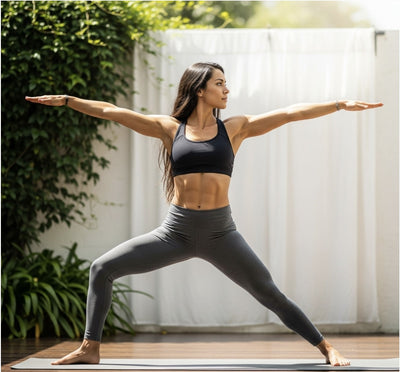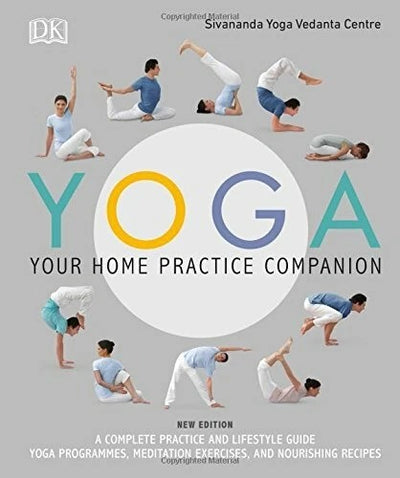
Vinyasa: The Connection Between Breath and Movement in Ashtanga - 5To9Style
Share
Vinyasa: The Connection Between Breath and Movement in Ashtanga
The Heartbeat of Ashtanga: Understanding Vinyasa
In the world of Ashtanga Vinyasa Yoga, the term Vinyasa is far more than just "flow." It represents the intelligent and profound synchronization of breath and movement, forming the very essence and rhythm of the practice. Every inhale and exhale is precisely coordinated with a specific movement, creating a continuous, fluid, and dynamic sequence of postures. This intricate connection transforms what might otherwise be just a series of physical exercises into a powerful moving meditation.
Understanding and actively engaging with Vinyasa is key to unlocking the full potential of Ashtanga Yoga. It's what makes the practice so invigorating, purifying, and deeply meditative, allowing practitioners to cultivate unwavering focus and internal awareness.
The Breath: Ujjayi Pranayama
At the core of Vinyasa is the Ujjayi breath, also known as the "victorious breath" or "ocean breath." This specific breathing technique involves constricting the back of the throat slightly during both the inhale and exhale, creating a soft, oceanic sound.

Why is Ujjayi so crucial to Vinyasa?
- Rhythm and Timing: The Ujjayi breath acts as the internal clock for the entire practice. Each inhale cues a specific movement, and each exhale cues another, ensuring a consistent pace and rhythm throughout the sequence.
- Internal Heat (Tapas): The gentle constriction in the throat helps to generate internal heat within the body. This heat facilitates detoxification, increases flexibility, and prepares the muscles and joints for deeper poses.
- Focus and Concentration: The audible sound of the Ujjayi breath provides a continuous anchor for the mind. By focusing on the breath, external distractions fade, and the practitioner's awareness is drawn inward, enhancing concentration.
- Energy Regulation: Ujjayi breath helps to regulate the flow of prana (life force energy) throughout the body, vitalizing the system and supporting the physical demands of the practice. Just as the right yoga mat provides stability for your poses, consistent Ujjayi breath provides stability for your internal energy.
The Movement: A Seamless Flow
Beyond individual poses, Vinyasa emphasizes the seamless transitions between them. Each movement is precisely linked to an inhale or an exhale, creating a continuous "string of pearls" where one posture flows effortlessly into the next.
This synchronized movement creates:
- Fluidity and Grace: The practice becomes a dance, rather than a series of static holds. This fluidity not only looks graceful but also allows the body to move more efficiently and with less effort.
- Increased Cardiovascular Health: The continuous movement elevates the heart rate, providing a cardiovascular workout that enhances stamina and endurance.
- Mental Absorption: The demanding coordination of breath and movement leaves little room for the mind to wander. This constant engagement forces the practitioner into a state of present-moment awareness, leading to a meditative experience.
- Drishti (Gaze Points) and Bandhas (Energy Locks): Integrated with Vinyasa, these elements further deepen the practice. Drishti helps to focus the mind, while Bandhas (Mula Bandha and Uddiyana Bandha) provide internal support, stabilize the core, and direct energy flow. This holistic approach is what defines the profound nature of Ashtanga. When you're flowing, wearing comfortable yoga clothing can enhance your experience by allowing unrestricted movement.
The Transformative Power of Vinyasa
The disciplined application of Vinyasa in Ashtanga Yoga yields significant benefits:
- Physical Purification: The internal heat generated by Ujjayi and continuous movement aids in sweating, releasing toxins, and improving circulation.
- Mental Clarity and Focus: The sustained concentration required for Vinyasa sharpens the mind, enhancing cognitive function and reducing mental chatter.
- Emotional Release: The dynamic movement coupled with deep breathing can help release stagnant emotional energy, leading to a sense of lightness and emotional balance.
- Deep Self-Awareness: By paying close attention to the intricate connection between breath and body, practitioners develop a heightened awareness of their internal landscape.
- True Moving Meditation: The continuous flow, when practiced with full presence, transcends mere exercise, becoming a profound meditative experience that calms the nervous system and connects one to their inner self.

Vinyasa is the very rhythm and soul of Ashtanga, making it a unique and powerful yoga practice that cleanses, strengthens, and illuminates from within.
Embrace the Flow: Connect Breath and Movement
Ready to experience the invigorating and meditative power of Vinyasa in Ashtanga Yoga? This profound connection between breath and movement offers a pathway to increased strength, flexibility, and profound inner peace. For the ideal gear to support your dynamic practice, including high-performance yoga wear and non-slip yoga mats, explore our collection at https://5to9style.com/collections/all.
Start your journey of breath-synchronized flow today. Visit our homepage for more insights and to discover products that align with your active, mindful lifestyle: https://5to9style.com.








